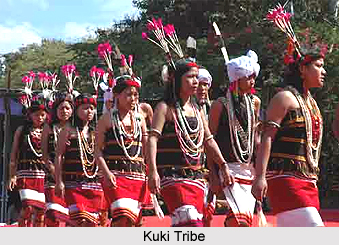 Dima Hasao district is an administrative district in the state of Assam in north-eastern India. Haflong is the district headquarters of this district. Dima Hasao district occupies an area of 4,888 square kilometers.
Dima Hasao district is an administrative district in the state of Assam in north-eastern India. Haflong is the district headquarters of this district. Dima Hasao district occupies an area of 4,888 square kilometers.
On 2 February 1970, Mikir Hills district (later renamed Karbi Anglong District) split from North Cachar Hills district. This district was later renamed as Dima Hasao on 1 April 2010. Haflong Hindi language, Dimasa, Hmar, Zeme Naga, Kukis are the main languages spoken here.
History of Dima Hasao District
Dima Hasao district was a part of the Dimasa Kachari kingdom before 1832. The kingdom was extended from Yamuna in the North to the foot-hills of Lushai Hills in the south and from the Kopili in the west to the Angami and Katcha Naga hills beyond the Dhansiri in the east.
The Dimasa Kachari kings had their Capitals successively at Kachomari, Dimapur, Maibang and Kashpur. In 1830, the Dimasa king Gobinda Chandra Hasnusa was assassinated by his own general Gambhir Singh, after that the British East India Company annexed the southern part of the kingdom on 14 August 1832 under the Doctrine of Lapse. The last Dimasa General Tularam Hasnusa ruled the rest. In 1837, a portion of Tularam`s kingdom was further annexed to the British Empire in India. After that, it was constituted into a sub-division of Nagaon district in 1837 with Head quarter at Asalu. In 1854, on the death of Senapati Tularam Hasnusa, the remaining portion of his kingdom was finally annexed to the British and added to the Asalu sub-division.
In the year 1867, this sub-division was abolished and allotted into three parts among the Cachar District, East Khasi Hills District and Jaintia Hills & Nagaon District. The present North Cachar Hills district was included in the old Cachar district with Asalu being only police outpost. In 1880, this portion was constituted into a sub-division with Head quarters at Gunjung under Cachar district. This head quarter was shifted to Haflong in 1895. Since then Haflong continues to be the Head quarter.
Geography of Dima Hasao District
The headquarters of Dima Hasao District are located at Haflong. Dima Hasao district occupies an area of 4,888 square kilometres. It is the third largest district of Assam. Dima Hasao District is surrounded by Karbi Anglong district in the East and Nagaland on North east, Manipur on East, Nagaon District on the North, Karbi Anglong Dist(W) on North-west, Meghalaya on West and Cachar district on South.
Demography of Dima Hasao District
According to the 2011 Population census, Dima Hasao district has a population of 213,529. The district has a population density of 44 inhabitants per square kilometer. Its population growth rate over the decade 2001-2011 was 13.53 %. Dima Hasao has a sex ratio of 931 females for every 1000 males and a literacy rate of 78.99 %. The major tribes inhabiting the district are Dimasas, Hmars, Zeme Nagas, Kukis. Other significant ethnic groups include the Biates, Hrangkhawls, Karbis, Vaipheis, Jaintias and Khelmas.
Culture of Dima Hasao District
The Dimasa Tribe of Dima Hasao District, being agrarian people, celebrate various agricultural festivals in different ways and at different times. Mostly Dimasa inhabiting North Cachar Hills and Karbi Anglong districts are successful in preserving their age-old traditional religious beliefs and practices in and through the celebration of several festivals, with some exceptions, due to being Hinduised.
Dimasa Festival
Dimasa festival can be categorized into community festivals and local festivals. Each village performs the local festivals separately, and participation is restricted to the people of the village concerned.
Other Festivals
The other community festivals are Misengba and Bishu, while local festivals are Khorongfang Gerba, Maisalai Gerba, Rajini Gerba, Hor-ni Gerba etc.
The district is globally known for the village named Jatinga, which is famous for the phenomenon of birds "committing suicide". Although the birds do not commit suicide and are actually killed, the phenomenon of suicide has spread everywhere among common people. About 2,500 Jaintia tribal people inhabit the village.
At the end of monsoon months especially on moonless and foggy dark nights between 6 p.m. and 9:30 p.m., the locals disturb birds and they are attracted to lights. These dazed birds are captured using bamboo poles by the locals. Famous naturalist late E.P. Gee brought this phenomenon at a global level 1960s. He drove to Jatinga with famed ornithologist late Salim Ali. The cause of it is likely to be disorientation at high altitudes and high speed winds due to the widespread fog characteristic at the time. The Zoological Survey of India sent Dr Sudhir Sengupta to unravel this mystery.



















